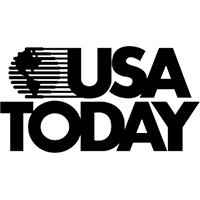The United States has a prescription drug problem. About 52 million Americans have misused prescription medications for non-medical purposes, reported from the National Institute on Drug Abuse (NIDA).
Prescription painkiller abuse, especially of the opiate class, can be especially devastating for young people as early misuse increases the risk for a lifetime of addiction and dependence. In 2010, one in 20 high school seniors said they abused OxyContin, a type of opiate made from oxycodone. This high abuse rate makes opiates one of the most commonly abused drugs by young people.
In the early stages of drug abuse, many people take OxyContin and other opiates by mouth. Consistent drug use causes the body to grow tolerant to the effects of opiates, so the individual must take an ever-stronger dosage to get high. At some point, the drug abuser stops getting high from OxyContin pills so he may choose to inject the drug.
Drug abusers crushed OxyContin before dissolving the pills in a solution to create a form that can be injected or snorted. Injecting OxyContin delivers the active ingredient directly into the bloodstream to cause an immediate high. Snorting OxyContin is not as fast as injecting but quicker than taking a pill.
For over 26 years, people from all over the world have chosen Waismann Method as their opioid detox provider.
We know the challenges you face and the importance of creating a unique and personal experience for you right from the start.Call for Detox Options 1-800-423-2482
OxyContin: The Original Formula

To address the problem, the U.S. Food and Drug Administration (FDA) pressed drug manufacturers to create opiates that are more difficult to abuse.
The FDA approved a reformulated version of OxyContin in the spring of 2010. This new formula is more difficult to manipulate than the original formula. Purdue Pharma, the manufacturer of OxyContin stopped sending the original formula to pharmacies later that year.
As officials hoped, the number of OxyContin overdose deaths declined sharply after reformulation. One study showed reports of death dropped 82 percent from the year before formulation and three years afterwards.
OxyContin Reformulation
Reformulating OxyContin has produced some unwanted effects. Patients who use OxyContin to control pain were anxious about the effectiveness of the new formula. People who became physically dependent on or addicted to OxyContin were extremely distressed about controlling withdrawal symptoms and cravings after reformulation.
Many addicted and dependent people continued to inject the newly reformulated OxyContin at the risk of suffering acute harm. Swelling, pain, and infection may occur at the injection site. Worse still, injecting OxyContin may cause overdose and death.
Other addicted and dependent people switched to heroin and other opiate drugs. Washington University School of Medicine performed a survey of drug abuse patients, asking which opiate they used to get high at least one in the previous 30 days. OxyContin fell from 47.4 percent of respondents before reformulation to 30 percent afterward. The use of heroin nearly doubled during that same period.
Abuse of prescription opiates has skyrocketed too. Unlike the tamper-resistant OxyContin, abusers can still crush and snort or inject prescription opiates like Zohydro, and are doing so at alarming rates. Hospitals around the country report high numbers of opiate overdoses and deaths resulting from drugs other than oxycodone OxyContin.
WAISMANN METHOD® Rapid Opiate Detox Center
The WAISMANN METHOD® rapid opiate detox center treats opiate addiction for drugs like: OxyContin, Oxycodone, Morphine, Suboxone, Methadone and other opiate drugs. Many people struggling with OxyContin addiction undergo a Rapid Opiate Detox procedure to detox from opiates. The Rapid Opiate Detox procedure significantly reduces the long, severe withdrawal symptoms associated with OxyContin detox. The patient is placed under sedation or anesthesia usually for 60 – 90 minutes; during the procedure patients are able to avoid most of the painful withdrawal symptoms. We pride ourselves on success and safety; we have been leaders in rapid opiate detoxification for over 15 years. Please contact Waismann Method for more information about OxyContin Addiction Treatment.





